Manjula and Marble Pothos both belong to the Epipremnum Aureum species and family Araceae. They have unique leaf patterns and they require low maintenance care which makes them popular in the market. But they have a prominent difference, the only difference between them is their growth rate.
Manjula Pothos has a slower growing rate and it tends to have a more compact growing habit. It makes it smaller which makes it suitable for smaller spaces. While Marble Queen Pothos has a faster-growing rate, it enables it to cover large surface areas in a short period of time. The flourishing topic nowadays is Manjula Pothos vs Marble Queen, which needs focus.
Difference between Manjula pothos and marble queen plants – Manjula Pothos vs Marble Queen
There are not many differences between the Manjula Pothos and Marble Queen plants but they do have some differences which you need to know. They differ in appearance, but both varieties are adaptable and easy to grow.
Leaf design
The leaf could be the best thing to notice the difference between two plants. There is a battle of pothos manjula vs marble queen. The leaves of Marble Queen are much flatter and broader than Manjula plant. The marble queen’s leaves feel smooth to the touch but not the same case in the Manjula plant.
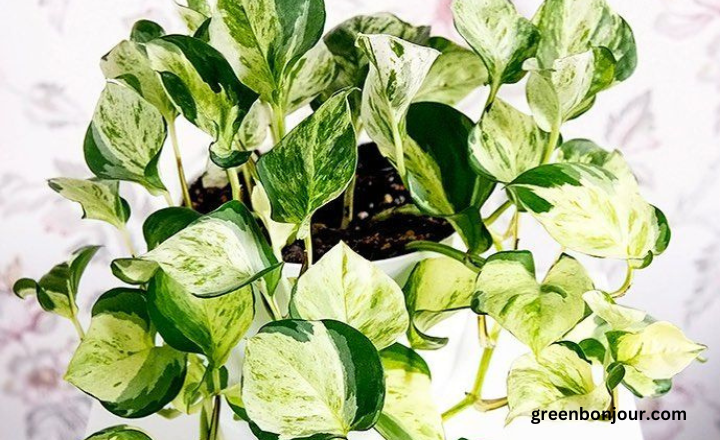
Among the pothos varieties the Manjula plants are small and look like the leaves of money plants. Their leaves are larger and broader as compared to the Marble Queen. Their leaves have small and round-shaped forms. These are also called Happy Leaf Pothos and are usually identified by their large and heart-shaped leaves.
Leaf color
The most notable difference between Manjula Pothos and Marble Queen is their difference in leaves’ color. This is the fact that the marble plants have so many different patterns and are also available in different colors like white, green, or cream. The patterns are like that on the marble.
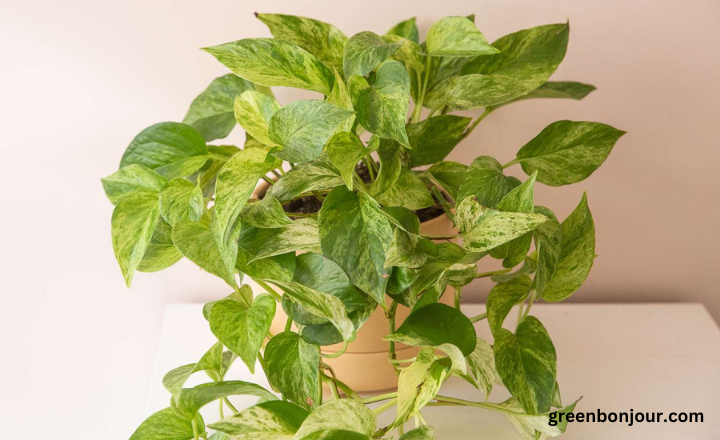
This is not seen in the Manjual pothos plants where you watch similar patterns but a variety of colors appearing from the middle to the edges. The plant is greener than the marble queen. This difference needs to be seen keenly as you get a little confused with the patterns on the leaves. Both belongs to the types of pothos plants.
Growth rate and habit
The Manjual pothos has a moderate growth rate in which its vines reach a length of 1-10 feet long. It has a more compact growth habit than the Marble Queen. It makes an amazing choice for smaller spaces or hanging baskets. The Manjula Pothos grows denser and more quickly than its counterpart.
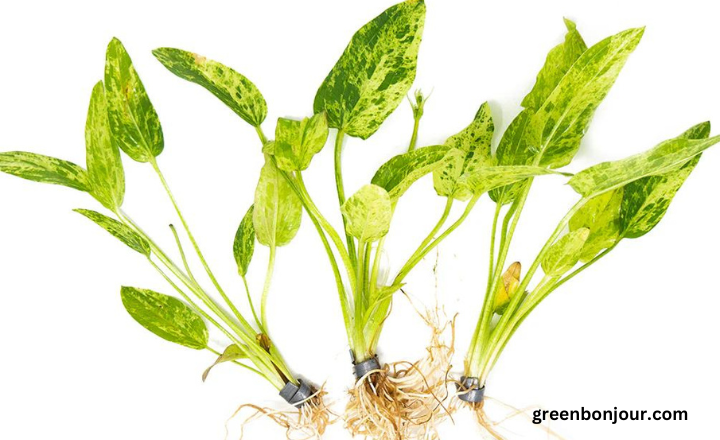
Marble Queen has a faster growth rate than the Manjula Pothos, its vines can grow longer than the Manjual’s which reach a length of up to 10-20 feet indoors. This plant has a more trailing and spreading growth habit. The Marble Queen can grow with good speed if they have a good amount of sunlight.
Similarities between the Manjula pothos and marble queen plants
As I mentioned, the differences between the Manjual Pothos and Marble Queen, they do have some similarities, that you should know and need to be focused on.
Growing way
The Manjula Pothos and Marble Queen plants have leaves without any patterns as the leaves grow out of the buds. When the leaves are young in both plants, they will not have variegation. Both get up to the height of 6 feet when they are grown naturally under natural conditions.
Even both plants have the same growing requirements. Both have similar preferences in light, as they belong to the same family of plants. When you carefully understand their light needs you will be able to best plants under the best conditions for these beauties to thrive.
Soil needs
In Marble Queen Pothos vs manjula, you have to give same mist in soil. Both plants thrive in well-draining soil and those types keep moisture without becoming waterlogged. A good quality of soil includes peat moss, perlite, and vermiculite which are good for the plants.
Soil offers the right balance of moisture retention, drainage, and aeration. You can use containers with drainage holes, it’s vital to prevent root rot and other related issues of the pothos types.
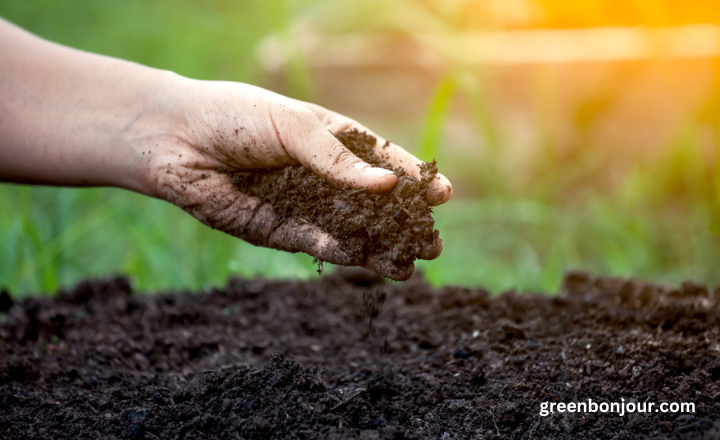
They share the same soil requirements, but there might be a minor difference in their pH requirements. But both plants are adaptable and can toilet a range of pH levels. These minor differences are unlikely to influence the health and growth of the plants
Light needs
Both require the same amount of light for their best growth. Both plants love south-facing windows. Plants flourish in bright, indirect light. It is great to place them near a window with filtered sunlight.
Filtered sunlight is necessary for these plants than direct which can burn the leaves of Manjula and Marble queen plants. You can place them near the window, under the curtain, or on a shelf, etc. Both cultivators can adapt to lower light conditions, but their growth may be slower.
Fertilizer
The Manjula and Marble Queen are the plants that don’t need much fertilizers. Their soil shouldn’t be overfertilized. Indeed, nutrients keep leaves bouncy and healthy but excess of everything is bad.
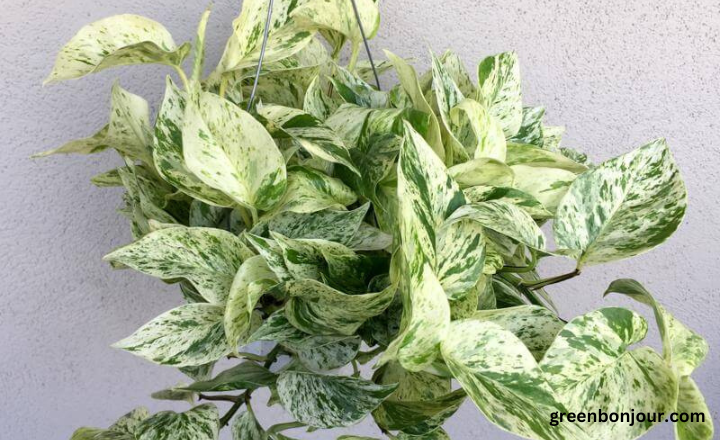
But if you want to use fertilizers to get the best results, then use diluted fertilizers in the soil that can be used to boost the Manjula and Marble queen plants. Both can be fertilized one time a month.
Pot type
The pot size matters a lot for any type of plant whether it’s Manjula or Marble. Every plant needs to be repotted to keep it healthy and not stop its growth. But you have to make sure that the size of the pot is suitable.
There should be good drainage holes in the pot and the material should be terracotta, the size should not be that small which can suffocate the roots and not keep it easy for roots to absorb the nutrients and water.
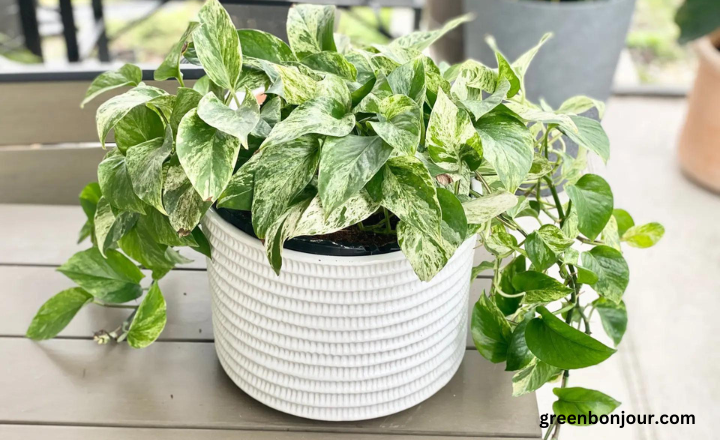
Caring tips for Manjula pothos and marble queen plants
Manjula Pothos and Marble Queen should get a good amount of sunlight because both are sensitive to cold temperatures. You should select a spot that should give the plants ample indirect sunlight.
Moisture is important for the plant, you should mist the plants when the soil appears dry and the plant appears lifeless and has little droopy leaves. You have to mist the plant quite often in the summertime whereas the wintertime causes these plants to get a little mist like one time every week or 10 days.
These plants easily get root shocks and to avoid that you have to fill a pot or container with water and keep it overnight so as to set the water temperature to room temperature. This will help the plants and roots from getting affected.
Conclusion
The marble queen vs Manjula is mainly discussed in the article. Through this, You got to know the differences as well as similarities in these plants. These plants have different leaves and also show different leaf patterns which is only the prominent difference between them.
Despite all these differences, this is the fact that they have more similarities than differences. Both need the same amount of sunlight, both are sensitive to cold temperatures. You can easily grow them by keeping all important points in mind.
FAQs
Why is Manjula Pothos expensive?
The reason is they have variegated leaves which make them expensive.
Is Marble Queen and Snow Queen the same?
The snow queen and marble queen plants have leaves that have patterns on the leaf’s surface. But the snow queen plants have more deep white markings than the marble queen plants.